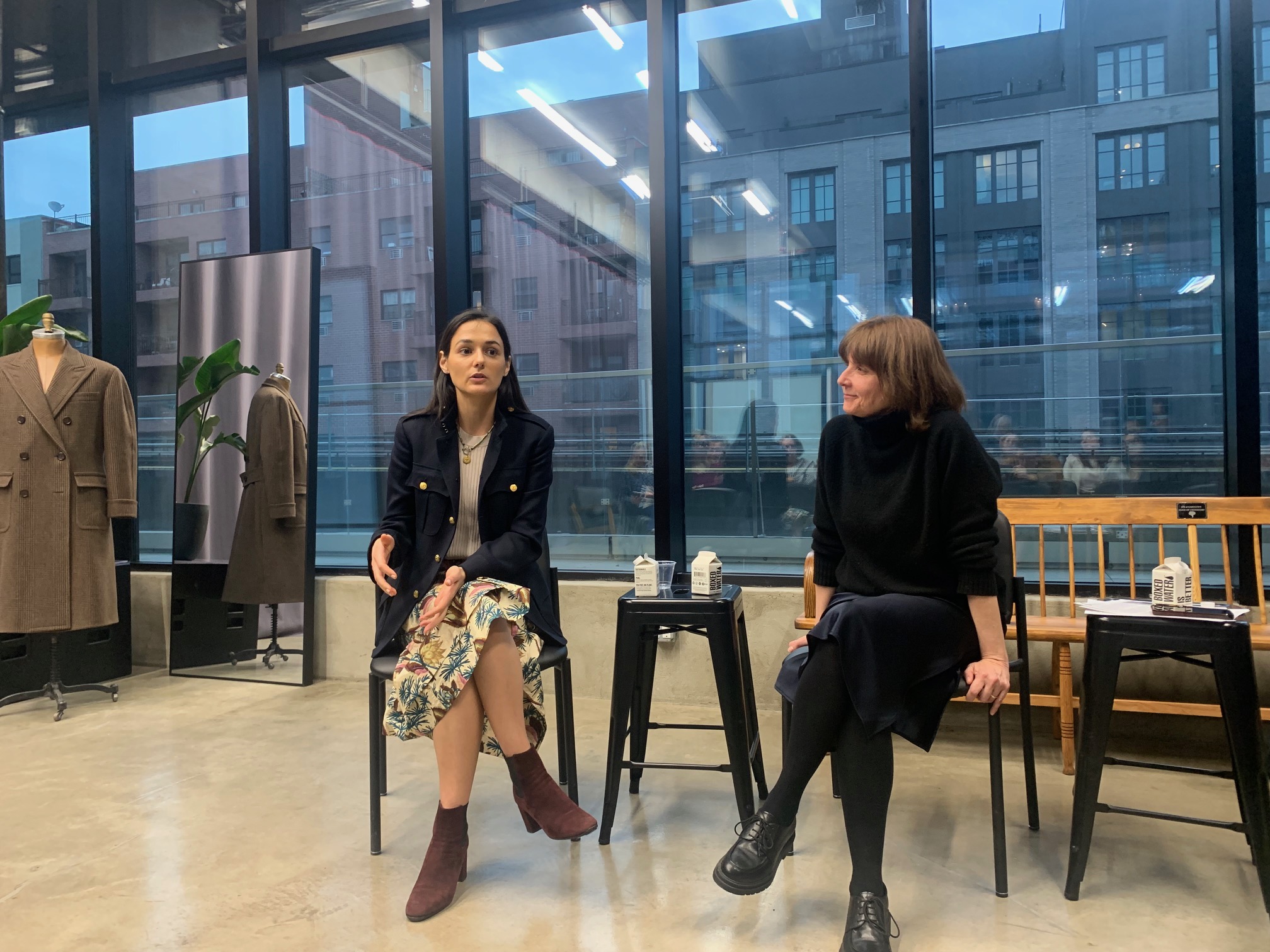On Wednesday evening, the Ferrara Garment Factory in Long Island City hosted a discussion and Q&A organized by the National Organization of Italian American Women commemorating the Triangle Shirtwaist Factory fire of 1911. March 25th marked the 114 years since 146 garment workers were killed in the blaze caused by recklessly unsafe working conditions, making it the deadliest workplace tragedy in the history of the city until the 9/11 attacks ninety years later. Most of the victims were Italian and Jewish immigrants, some as young as 13 years old, and all but 23 were women.
The event was held on the second floor of the Ferrara factory, an open office space with floor-to-ceiling windows facing the elevated tracks of the N and W subway lines, which looked close enough to touch as they hummed by over 31st Street. “I can say this is one of the coolest spaces in which I have done an event,” said Mary Anne Trasciatti, Professor of Rhetoric and Public Advocacy and the Director of Labor Studies at Hofstra University. She is also President of the Remember the Triangle Fire Coalition, which was instrumental in the creation of a memorial at 23 Washington Place, where the building that originally housed the Triangle Shirtwaist Factory still stands.

Trasciatti’s recounting of the events is harrowing. The fire is thought to have started when a stray ember from a worker’s cigar on the eighth floor fell into a bin of cloth scraps. The blaze quickly spread due to the poor working conditions of the factory and the building itself. Despite being “fireproof,” the floors and window sills were made of wood, with large portions soaked in sewing machine oil. Trasciatti described accounts from workers that the air itself on the factory floor felt like it “literally burst into flames” from all the minuscule stray fibers floating in it. While the eighth-floor workers called in the emergency to their bosses on the tenth floor, those on the ninth floor never got the message, robbing them of the precious minutes to evacuate and ultimately sealing their fate. Locked doors and a shoddy fire escape that collapsed midway through the disaster prevented their escape, leading to sixty-two workers leaping out of the building to what they knew was their death.
“Hundreds of people saw the fire because it was close to Washington Square Park,” Trasciatti noted, describing accounts of workers’ final embraces before jumping, as the crowd below begged them not to. Among those bearing witness was Frances Perkins, then a social worker, who was stirred to action in the labor movement from what she saw that day, ultimately becoming President Franklin Roosevelt’s Secretary of Labor. She was quoted on the 50th anniversary of the fire as saying that “the New Deal started on March 25th, 1911.”
The story resonated with Gabrielle Ferrara, President of Ferrara Manufacturing, which was founded by her family in 1987. “There are still some horrible stories of worker conditions that I read about in the news, and I just can’t believe that that’s still happening in the world,” Ferrara said. Bangladesh has been the sight of numerous fires and accidents that have killed hundreds over the last two decades, in garment factories contracted out by major brands like Walmart, Gap, and H&M. But even this feature is not new, as the owners of the Triangle Shirtwaist Factory contracted out labor through other entities on their own floor. Then as now, the brand responsible for the manufacture and sale of the goods is not held accountable, deemed distanced enough from disasters of their making by way of subcontractors to be found liable. “You can put someone in the middle and say, ‘I didn’t know,’” Trasciatti explained.

Gabrielle seeks to fix the “broken” fashion industry with a strategy that can compete with its more exploitative practices. “We hope to be a place that really leads the way in creating a sustainable and comfortable working environment that’s safe as well,” she told the audience, also noting the benefits of new tech in increasing output. Her company contracts with the U.S. government for military uniforms, and also makes clothes for brands like Ralph Lauren. During the COVID-19 pandemic, they also produced 21 million gowns and masks as international supply chains shut down.
Beyond safety and supply chain concerns, Ferrara noted that a broader re-evaluation of the value of garments is in order, as rock-bottom prices from fast fashion brands continue to distort consumers’ expectations. “You need clothes – before you walk out the door you better be wearing clothes,” Ferrara said, but added that shifting views on what that’s worth is “a really, really hard thing to change in consumer culture.” In a world where fast fashion and the unscrupulous practices associated with it thrive on a general lack of awareness from consumers, Ferrara deemed education a powerful tool to push back. “Storytelling, telling people why it’s important to buy clothes of a certain quality and from a certain supply chain, is what’s going to change consumers’ perception,” she said. “But it’s a long battle to fight, because you’re fighting against something that’s priced currently at the price of a coffee.”












